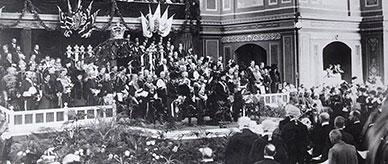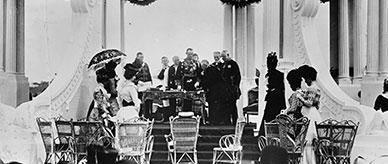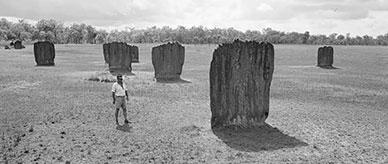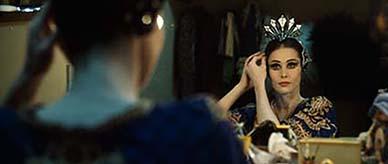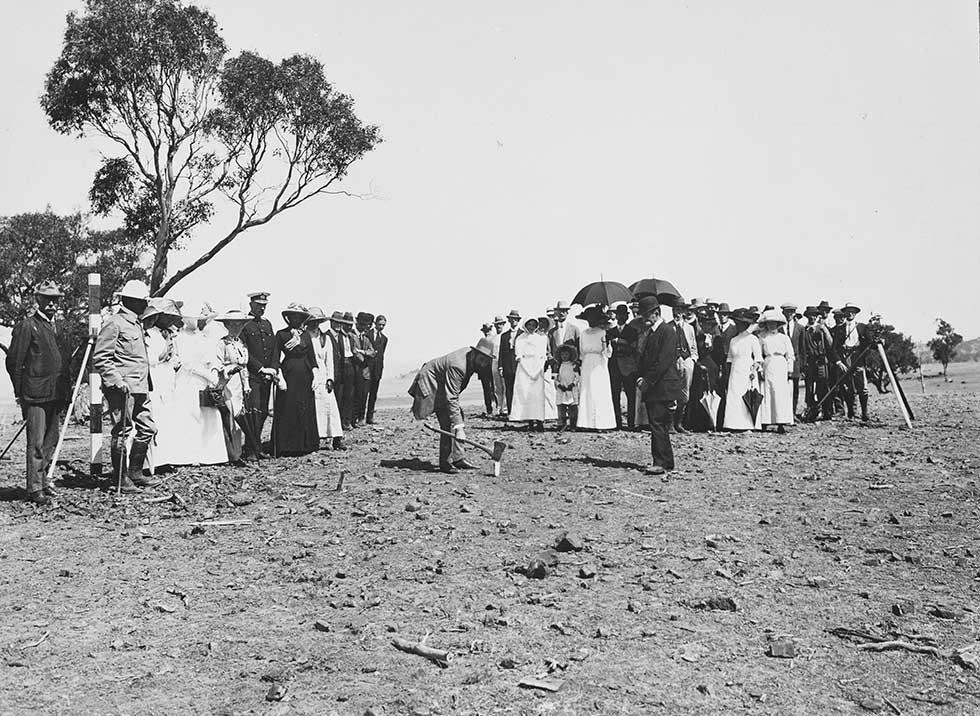


About this record
This is a photograph, one of a series, of King O'Malley (1858–1953), the Minister for Home Affairs, knocking in the first surveyor's peg on the site of Canberra, the future capital of Australia, on 20 February 1913. Opposite O'Malley stands Charles Macdonald (1861–1925), Speaker of the House of Representatives, who drove in the second peg a few metres away. A group of formally dressed men and women is watching them. There is a surveyor (far right) and surveyor's equipment present to ensure the pegs are in the correct place. The ground in the foreground is rough and dry, and there are few trees to be seen.
Educational value
- Shows King O'Malley, one of Australia's most flamboyant politicians, famous for his flashy dressing and his radical ideas of democracy; O'Malley pushed for the establishment of the Commonwealth Bank of Australia and the Melbourne-to-Perth railway, and was responsible for the unpopular ban on alcohol in the ACT from 1910 to 1927; via his American background, he was also responsible for the spelling of 'Labor' in 'Australian Labor Party'.
- Illustrates politicians' understanding of the importance of the 'symbolic gesture' and the photo opportunity.
- Shows an event that represents the culmination of a long and controversial process to identify a site for Australia's national capital, the location of which had to satisfy those from both Victoria and New South Wales.
- Shows a barren, dry and empty landscape, despite the fact that Canberra was selected as the site for the new capital because it had plenty of water and 'distinctive features'.
- Shows the site of Australia's capital city as bare land – eleven years after this photograph was taken, the first blocks of land for residential and business use were sold by auction.
- Shows a surveyor's peg and theodolite, indicating that the area was in the process of being surveyed and laid out in preparation for development.
- Shows a range of 1913 styles of dress, including uniforms, pith helmets, hats, suits and ties for the men, and long dresses for the women.
- Suggests the heat of Canberra summers, because the women wear light dresses and wide-brimmed hats, and carry umbrellas as shelter from the sun; some of the women have netting over their hats as protection from wind or flies.
Acknowledgments
Learning resource text © Education Services Australia Limited and the National Archives of Australia 2010.
Related themes
Need help with your research?
Learn how to interpret primary sources, use our collection and more.

